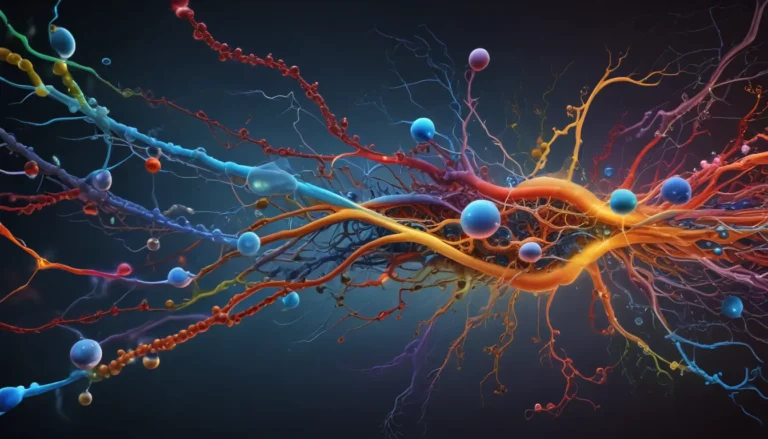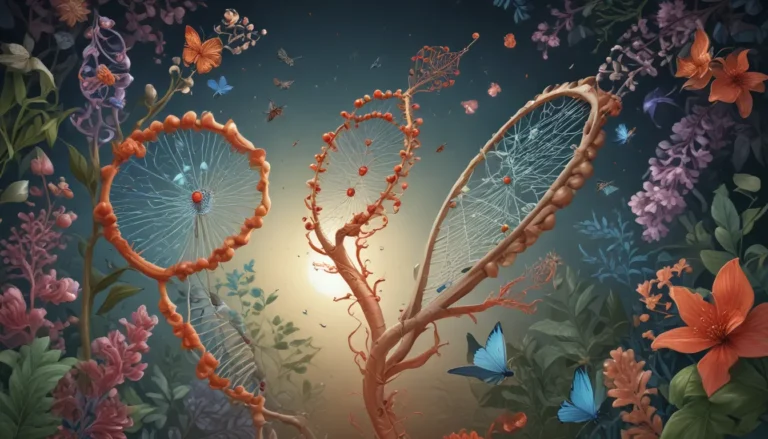A Note About Images: The images used in our articles are for illustration purposes only and may not exactly match the content. They are meant to engage readers, but the text should be relied upon for accurate information.
Welcome to the captivating world of transitional fossils, where the remnants of ancient organisms tell stories of evolutionary transformations like never before. These extraordinary fossils serve as missing puzzle pieces, bridging the gaps between different species and offering invaluable insights into the history of life on Earth. In this article, we will delve into 18 astounding facts that highlight the significance of transitional fossils in biology and paleontology. From the evolution of whales from land to sea to the emergence of birds from dinosaurs, these facts will showcase the intricate web of evolution and the wonders of transitional fossils.
Unraveling Evolutionary Mysteries: The Significance of Transitional Fossils
Transitional fossils are like windows into the past, providing tangible evidence of the gradual changes and transitions that have shaped species over time. These fossils fill the gaps in evolutionary history, confirming the theory of evolution and showcasing the interconnectedness of all life forms on Earth. By studying transitional fossils, scientists can piece together the intricate puzzle of life’s diversity and trace the lineage and relationships between different organisms.
Exploring Iconic Transitional Fossils: From Land to Sea and Beyond
1. The Archaeopteryx: A Living Link Between Reptiles and Birds
The Archaeopteryx stands as a perfect example of a transitional fossil, blending reptilian and avian features in a mesmerizing display of evolution. This iconic fossil provides undeniable evidence of the evolution of birds from reptilian ancestors, offering a glimpse into the ancient past when dinosaurs roamed the Earth.
2. Tiktaalik: The Fish That Walked on Land
Tiktaalik, a remarkable transitional fossil, showcases the evolution of fish to amphibians with its distinctive limb-like fins. This captivating fossil serves as a living testament to the adaptation of vertebrates to terrestrial environments, shedding light on the development of walking limbs in early tetrapods.
3. Basilosaurus and Ambulocetus: The Evolution of Whales from Land to Sea
Fossils like Basilosaurus and Ambulocetus offer a unique glimpse into the transition of whales from land-dwelling creatures to the majestic marine mammals we know today. These fossils highlight the incredible adaptations that enabled whales to thrive in aquatic environments, showcasing the power of evolutionary processes.
4. Pakicetus: Ancestral Whales with Legs
Pakicetus, a fascinating transitional fossil, unveils the presence of ancestral whales with legs, providing compelling evidence for the evolution of these magnificent marine mammals. This discovery supports the hypothesis that whales evolved from land-dwelling mammals, showcasing the transformative power of evolution.
Discovering the Living Fossils: A Glimpse Into Evolutionary History
5. Homo habilis: The Handy Man of Early Humans
Homo habilis, one of our earliest ancestors, stands as a transitional fossil between Australopithecus and Homo erectus, showcasing the development of tool-making skills and the transition to a more sophisticated species. This remarkable fossil offers insights into the cognitive evolution of early humans and the emergence of complex behaviors.
6. The Coelacanth: A Living Fossil With Ancient Roots
The Coelacanth, once thought to be extinct, serves as a unique transitional fossil that provides valuable insights into the evolutionary history of fish and the transition to land-dwelling creatures. This living fossil showcases ancient features that link the past to the present, offering a glimpse into the world of prehistoric marine life.
Illuminating Evolutionary Transitions: From Fish to Amphibians and Beyond
7. Eusthenopteron and Acanthostega: The Transition from Fish to Amphibians
Fossils like Eusthenopteron and Acanthostega demonstrate the evolution from fish to amphibians, showcasing features that bridge the gap between aquatic and terrestrial life. These fossils offer vital insights into the development of early tetrapods and the adaptation of vertebrates to land environments.
8. Fallotodus: Tracing the Evolution of Sharks to Rays
Fallotodus, a transitional fossil, provides insights into the evolution of sharks to rays, showcasing a combination of traits from both species. This fossil highlights the gradual changes in anatomy and adaptation that have occurred over time, shedding light on the diverse forms of marine life.
Conclusion: Embracing the Wonders of Transitional Fossils
In conclusion, transitional fossils serve as invaluable tools for unraveling the intricate story of life’s evolution on Earth. These remarkable fossils offer a tangible connection between past and present, allowing us to witness the gradual transformations that have shaped the diversity of species we see today. By studying transitional fossils, scientists can unlock the mysteries of evolutionary history and gain a deeper understanding of the interconnectedness of all life forms.
Join the Evolutionary Adventure: Embrace the Beauty of Transitional Fossils
Embark on a journey through time and marvel at the wonders of transitional fossils, where the past comes alive in a fascinating display of evolution. Explore the hidden treasures of ancient life forms and uncover the secrets of transitional fossils that continue to inspire and amaze us. Let the stories of these remarkable fossils ignite your curiosity and passion for the wonders of evolution.
FAQs: Unveiling the Truth Behind Transitional Fossils
Q: What are transitional fossils?
A: Transitional fossils are the fossilized remains of organisms that exhibit traits of both ancestral and descendant species, providing evidence of evolutionary links between different groups of organisms.
Q: Why are transitional fossils important?
A: Transitional fossils play a crucial role in understanding the evolutionary history of life on Earth, helping scientists identify intermediate stages of species development and evidence of common ancestry among different organisms.
Q: How are transitional fossils formed?
A: Transitional fossils are formed through fossilization, where the remains of an organism are preserved over time through processes such as sedimentation, mineralization, or preservation in ice or amber.
Q: Can transitional fossils prove evolution?
A: While no single fossil can conclusively prove evolution, the presence of transitional fossils offers strong evidence for the theory, showcasing the gradual changes and adaptations that have occurred over time.
Q: Are transitional fossils rare?
A: Transitional fossils can be relatively rare due to specific fossilization conditions, but significant discoveries have been made over the years. Ongoing excavations continue to unveil new transitional fossils, expanding our knowledge of evolutionary history.
Uncover the wonders of transitional fossils and explore the mysteries of evolution like never before. Join us on a journey through time and witness the beauty of these remarkable fossils that continue to inspire and enlighten us. Embrace the power of transitional fossils in unraveling the story of life’s evolution and let their tales of transformation ignite your curiosity and passion for the wonders of the natural world.






